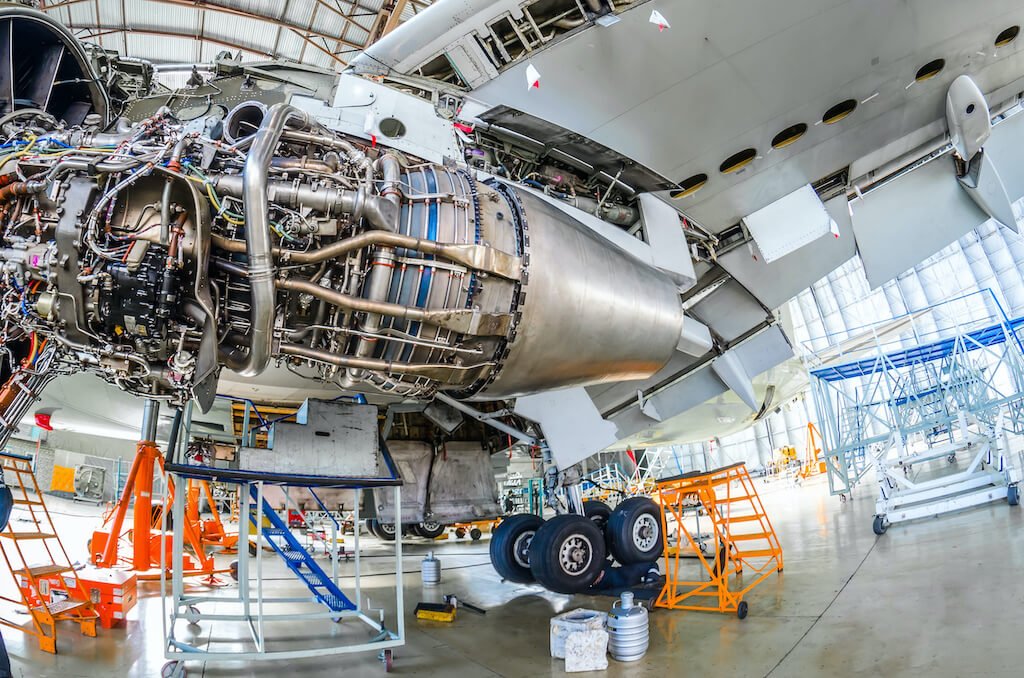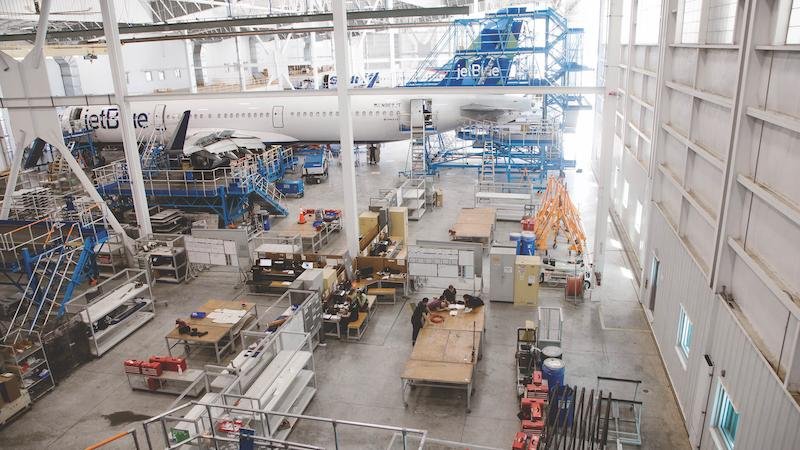In recent years, the aviation industry has seen unprecedented growth, which emphasizes the importance of increasing Global Aircraft Parts Sourcing. In this article, meemsdxb tries to provide you with a complete review of the global perspective of supplying aircraft parts and, for you, their central role.
It will also provide you with solutions and keys to deal with the daunting challenges ahead and be able to provide innovative strategies with your knowledge to overcome these obstacles and be on the way to finding top-quality aircraft parts. Be with us.
What Is Aircraft Parts Sourcing?
Global Aircraft Parts Sourcing actually refers to the complex process of sourcing, procuring and transporting essential parts for the repair, maintenance or construction of an aircraft.
This multi-faceted process requires a deep understanding of the dynamics of the aviation industry, including regulatory nuances, and detailed requirements tailored to different aircraft models.
With meemsdxb, we provide detailed analysis so that you can be ranked among a wide range of suppliers, carefully review quality standards, and evaluate pricing factors.
Importance of Global Aircraft Parts Sourcing
The aviation sector is known to be one of the most regulated industries worldwide, with a strong emphasis on safety and compliance. Effective sourcing of aircraft parts plays an important role in ensuring the integrity and reliability of aircraft systems.
Without proper resources, there is a greater risk of accidents, incidents, and even fatalities. Additionally, Global Aircraft Parts Sourcing offers significant cost-savings opportunities.
Airlines can enhance efficiency and productivity in the aviation industry by:
Procuring parts from countries that have lower labor costs or favorable exchange rates.
Supplying the right parts with access to a wider range of products.

Challenges Faced in Global Aircraft Parts Sourcing
Despite sourcing aircraft parts in the world and reaping the many benefits they offer, you must realize that this industry is not without its challenges. Some of the main obstacles are:
Regulatory Compliance
For each country, the aviation industry is governed by a myriad of distinct regulations that emphasize the importance of strict compliance to maintain aircraft operational safety and soundness.
Adopting sustainable and ethical sourcing practices can take a positive step in the integrity of the supply chain and improve the brand reputation of the industry, and by creating this process, contribute to a more responsible aviation ecosystem.
Stepping into this industry should go along with modern and advanced training. Ongoing education on regulatory complexities enables sourcing professionals to navigate dynamic regulatory terrain with agility and confidence, thereby increasing compliance awareness within the organization.
Quality Control
Ensuring the quality of supplied aircraft parts is critical to the safety and efficiency of the aviation industry. In fact, in this important industry, parts are classified into two categories:
Top quality aircraft parts
which are approved very suitable and compatible with aircraft parts and cause basic planning for the health of the aircraft.
Poor quality components
Poor quality components can pose significant risks to the reliability and integrity of aircraft systems and potentially lead to accidents.
Note 1: To reduce the risk of damage to all aircraft components, strong quality control measures must be carefully implemented during the sourcing process.
Note 2: Non-destructive testing (NDT) and computer-aided design (CAD) simulations are two advanced technologies that can significantly increase the accuracy and efficiency of quality control assessments. Using these advanced tools, you can:
Identified defects.
Removed possible defects in source components.
Ensured that only the highest quality components were integrated into aircraft systems.

Supply Chain Disruptions
It is a complex network that includes several intermediaries from producers to end users. Planning for supply chain disruptions is very important and necessary. Because any disruption in this chain of delays or shortages can have severe consequences. These disturbances can potentially endanger the safety of aircraft operations, such as:
Increase in costs
Delay in repairs
Counterfeit Parts
Counterfeit parts are a significant concern in the aviation industry. Counterfeit parts may look like original parts but do not meet the required standards. This poses serious safety risks as these substandard parts can lead to system failure or failure.
Vigilance and rigorous verification processes are essential to combat this.
Using advanced technologies such as blockchain-based tracking solutions and radio frequency identification (RFID) tagging can cause:
Increasing the accuracy and efficiency of authentication of source components
Accelerating the use of these advanced tools.
Identifying and removing possible counterfeit parts in the supply chain.
Ensuring original components in aircraft systems.
Strategies for Overcoming Challenges in Global Aircraft Parts Sourcing
Several strategies can be used to address the challenges in the supply of aircraft parts in the world:
Partnering with Experienced Suppliers
By having working relationships with highly experienced suppliers in the aviation industry, you can significantly simplify the process of sourcing aircraft parts.
These individuals have extensive knowledge of industry regulations, and with their experience and expertise in this field, they can consistently deliver reliable components that meet stringent standards.
Using their expertise leads to the following:
Reduces the risk of counterfeit parts.
It also guarantees the overall quality of the manufactured parts.
Optimizes sourcing strategies.
The safety and reliability of aviation operations will be optimized.
Finding customized solutions.
Implementing Quality Control Measures
Implementing comprehensive quality control measures is critical to maintaining maximum safety and reliability of aircraft systems. Through detailed inspections, you can:
Received detailed tests.
He provided detailed certificates.
Verify the correctness and functionality of source components.
Significantly reduced the risk of acquiring substandard or counterfeit parts.
Protected against potential operational failures.
Guaranteed optimal performance.
Utilizing Technology
The use of advanced technology is very useful in increasing the efficiency and transparency of the aircraft parts supply process at the global level.
One of these is the blockchain, which actually provides a strong solution for tracking the supply chain from manufacturers to end users, and provides traceability and accuracy. Unparalleled source components assure.
Using the power of blockchain technology, the risks of disruptions and counterfeit parts can be significantly reduced, which results in strengthening the integrity of the aircraft supply chain.
By embracing such technological innovations, aircraft operators and maintenance providers are able to optimize their sourcing strategies while maintaining the highest standards of quality and reliability.
Building Robust Relationships and Networks
Establishing strong relationships with essential stakeholders in the aircraft parts industry, which include manufacturers, distributors, and maintenance organizations, is very effective in optimizing sourcing capabilities.
In the aviation industry, the following can be gained from creating a reliable network of reliable partners:
Access to a comprehensive collection.
Faster purchase process.
Reducing the risks associated with counterfeit or substandard parts.
Get valuable insights.
Sourcing has become more efficient.
Limited Availability of Parts
As some aircraft components are specific and limited, significant challenges arise for airlines and maintenance providers. As aircraft models become old or obsolete, it can become increasingly difficult to find compatible and reliable parts, leading to delays in repairs and maintenance that can negatively impact operational efficiency.
Proactive inventory management significantly reduces this challenge by eliminating the following:
It enables the timely identification of possible deficiencies.
It enables the purchase of replacement parts.
Minimizes downtime.
Minimize downtime and ensure the safety and reliability of your aircraft.
Pricing Fluctuations
Aircraft parts pricing is prone to fluctuations due to factors such as market demand, exchange rates, and manufacturer pricing policies. These dynamics create challenges for airlines in accurately forecasting and budgeting their logistics costs.
To solve this important problem related to aviation industry budgets, we recommend establishing long-term partnerships with suppliers, positioning yourself in negotiations for favorable pricing agreements, and closely monitoring market trends management and cost-effective sourcing.
Be economical, By using these strategies, airlines can manage price fluctuations with greater agility, ensure cost predictability, and strengthen financial stability in the supply of aircraft parts.
FAQ:
Q: What is aircraft parts sourcing, and why is it important in the aviation industry?
A: The process of finding, buying, and sending the necessary parts for the repair, maintenance, or construction of aircraft is called the sourcing of aircraft parts. In this industry, this helps a lot with safety and compliance with aircraft systems.
Q: What are the challenges faced in global aircraft parts sourcing?
A: The challenges in this industry are very different and varied. But in general, the essential challenges include the following:
• Compliance with regulations.
• Quality Control.
• Supply chain disruptions.
• Challenges of detecting counterfeit parts.
Q: Why is the presence of counterfeit parts a concern in aviation?
A: The challenge is here! Counterfeit parts are similar to the original parts but do not meet the required standards. Following each part, there are serious safety risks as they can lead to system failure or failure. Vigilance in the process of careful verification and continuous review is very important in this matter.
Q: How can technology, such as blockchain, be utilized in aircraft parts sourcing?
A: This technology has very wide applications. Blockchain technology can be used to trace the supply chain from manufacturers to end users, ensuring the traceability and authenticity of source components. This technology helps to fundamentally reduce the risks of failure and counterfeit parts.
ConclusionMeemsdxb would like to thank you for completing this article, which has led to the global sourcing of aircraft parts as an essential aspect of the aviation industry. The safety, productivity, and efficiency of aircraft operations are highly dependent on the availability of reliable, top-quality aircraft parts and compatible parts.
Challenges? By complying with regulations, quality control, counterfeit parts, and supply chain disruptions, the challenges can be solved and by complying with these key points and with proper planning, they can be effectively overcome through strategic measures. By working with experienced suppliers, implementing strong quality control processes, and using technology, the aviation industry can overcome the complexities of sourcing aircraft parts around the world and continue to thrive.
Resources:
Aircraft Tire Wear Patterns and Causes” – AvBuyer
“The Future of Aircraft Tires: Advancements in Materials and Technology” – Aviation Today
Aerospace Manufacturing and Design
Federal Aviation Administration (FAA)
Skybrary
Aviation Stack Exchange
AvBuyer
Aviation Today

2 thoughts on “Global Aircraft Parts Sourcing”